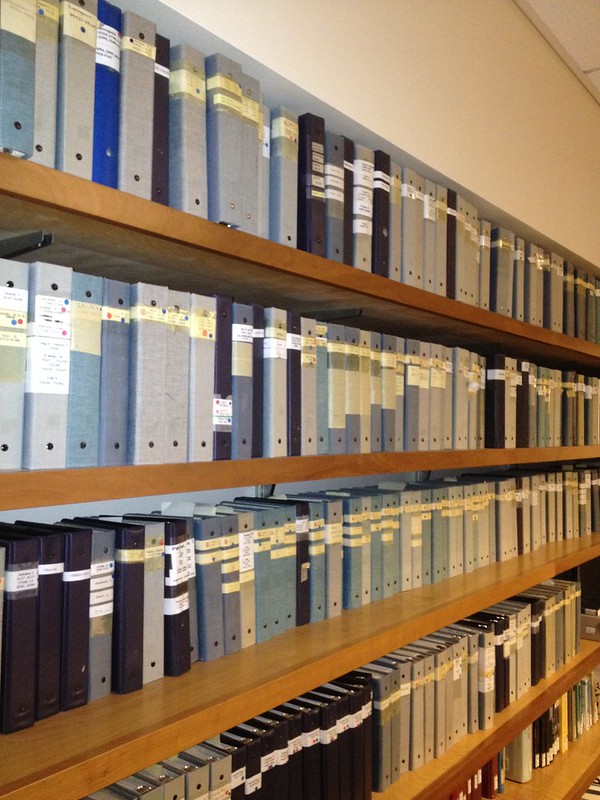
I’ve been talking to different folks about lab notebooks so they are on my mind. I looked up this thread on the AP Biology Community website and I am hoping to revive the discussion since I think lab notebooks are one of the essential tools needed to fully implement inquiry in the classroom. The AP Community is an incredible group of folks that like to collaborate on trying to work out effective instructional strategies. But what form should these notebooks take? How do I grade them? What are my goals and how do I get my students to buy in to the same goals? How do I use the notebooks and how do the students benefit? Is this assignment for the students or is it for me?
During the discussions about notebooks, I generally point out to other teachers, that I try to make the notebook something the students choose to do or, even, to begin enjoy doing. My general strategy has been to make assignments that rely on the completeness and accuracy of a good laboratory notebook to complete. In other words, I make sure to give the students high value assignments that almost required they return to their well-drafted, notebooks to be successful.
The notebooks are introduced with explicit instructions and general guidelines but it very important for students to take ownership and pride in their notebooks. For that to happen it is my contention that the students need to have some responsibility for developing their own style and approach to a notebook. To that end, when I make the notebook assignment, I try to create the need and rationale while at the same time show the students numerous examples of past student notebooks and actual examples from research scientists. I encourage/require drawings, art, and reflection. I want the notebooks to become something the student values and is proud of. I want it to become a tool of reflection. I do not overemphasize the formal laboratory notebook–the legal document though I do try and point out how important it is to record your thoughts as a record establishing your intellectual property. Since, my classroom was typically a mix of field work and lab work, I also sought to have my students develop a hybrid notebook—both a field and lab notebook. We also explored the idea of using the notebook as a parking place for working out ideas and thoughts for biology related topics.
The bugaboo with notebooks has always been grading. How do you grade so many different notebooks fairly, consistently and with any regularity? My short answer is that you don’t. Mostly, my students receive what woud best be termed completion credit if I see enough evidence that they are making a good faith effort. I also offer feedback to help them improve their notebook but the other assignments where a good notebook paid dividends is usually all the motivation my students need. (BTW, one of those assignments when I was teaching high school biology was a lab final for two separate 9 weeks periods where every student carried out an original research question over some lab topic we had covered earlier.) The other thing that we use to help students improve their notebooks is peer review. There are always outstanding examples of notebooks early on and I make a big deal about these for all to see (with permission from the student). Seeing other exceptional student work can really help move the bar for others–as long as they don’t feel like they have to meet or exceed these standards.
When I first started using notebooks in the classroom there were really very few resources to help guide the effort. That really is not the case today. Here are some to get you started:
Check out this powerpoint presentation from Richard Cellarius for inspiration and rationale for why you might want to make notebooks a point of emphasis in your lab program. I am particularly enamored with the thought of a “gamesworth of reasoning”
Googling “laboratory notebook guidelines” or “keeping a field journal” will get you all sorts of resources like this guide from Rice University or this great resource from Colin Purrington. Consider adding “ppt” or “pdf” to your google search to expand your search.
A classic book to help guide the development of Laboratory notebooks is: Writing the Laboratory Notebook by Howard M. Kanare and from the American Chemical Society
One of my mentors was Dr. Henry Fitch. Dr. Fitch introduced me to the Grinnell method for keeping field notes. Dr. Fitch had studied under Grinnel and like so many others kept meticulous field notes. You can get a feel for how to keep notes using this method from this archived Miscellaneous Publication No. 30 of the University of Kansas Museum of Natural History: “Collecting and Preparing Study Specimens of Vertebrates” by E. Raymond Hall
One of the best ways to learn to journal or to keep a notebook is to look at others for examples.
To that end no resource is better than Field Notes on Science and Nature edited by Michael R. Canfield.
This book is just that, a repository of samples from field journals. It is a beautiful and inspiring book. Be sure to check it out.
Cornell Sapsucker Woods naturally has some guidance as well.
The Field Book Project at the Smithsonian has a number of great examples as well. With a number of images here.
The Naturalist’s Field Journal, A Manual of Instruction Based on a System Established by Joseph Grinnell by Steven G. Herman brom Buteo Books is also an excellent resource but it is out of print and unfortunately when copies are available they are very expensive. Still you may get lucky.
I have found that How to Keep a Naturalist’s Notebook by Susan Leigh Tomlinson and Illustrating Nature, Right-brain Art in a Left-brain World by Irene Brady to both be excellent books to inspire students on layout, art and approach.




